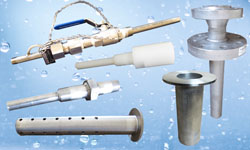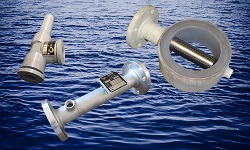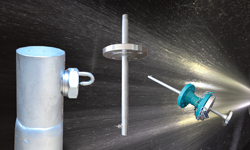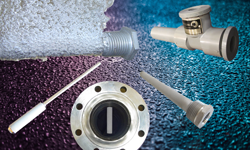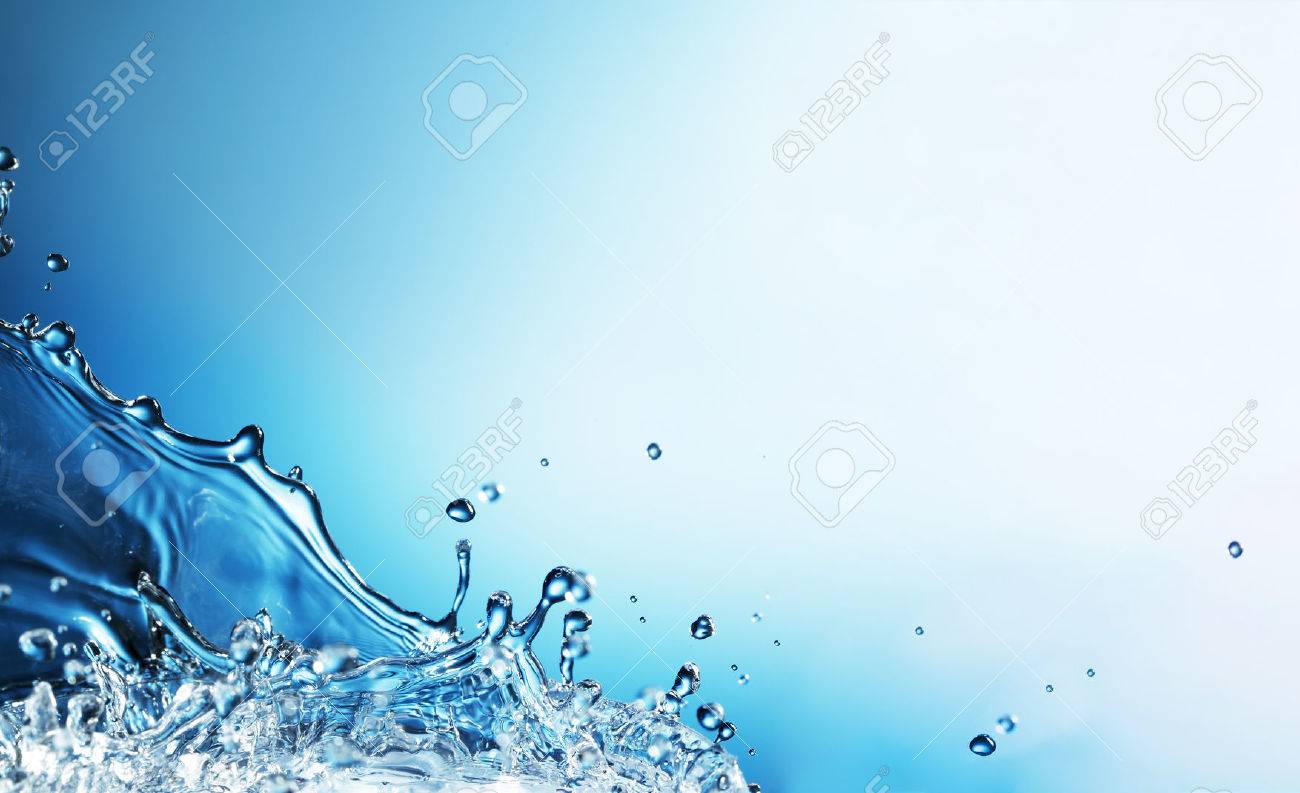Choosing an Injector or Chemical Diffuser System
Consider these factors:
Type of Chemicals Being Mixed
Depending upon the viscosity and density of the chemical being injected, additional chemical diffusion techniques may be necessary including:
-
Injector with a multi-orifice design (full diameter sparger)
-
Dilution of chemical stream with the use of softened carry water to increase the flow rate and thus enhance the diffusion of the chemicals,
-
Venturi style eductor system
-
Addition of static mixer
Flow rate and velocity of Pipeline
Good chemical diffusion for a full, closed piping system can be achieved for many highly miscible chemicals if certain design criteria are followed. White1 found that (using a chlorine solution and dye studies) if a Reynolds number of 2000 or greater and the chemicals are injected through an injector or chemical diffuser in the center of the pipe, the chlorine solution would be completely mixed in approximately 10 diameters of pipe length.This general rule of thumb is valid for pipe sizes up to about 20 inches.If the pipe is larger than 20 inches in diameter, use a full diameter multi-orifice pipe diffuser. For less miscible chemicals such as dilute polymer or a coagulant, additional mixing or diffusion techniques will likely be necessary.
Type and Flow rate of Injected Chemicals
If the chemicals can cause significant scaling of the injectors (such as 19% aqua ammonia or 12.5% sodium hypochlorite), and it would be difficult to depressurize the pipeline to remove the injector quill for cleaning, Inyo recommends the use of corporation stops with removable injection quills.A corporation stop allows for the removal of the injection quill while the pipeline remains pressurized.Full diameter pipe injectors can also work in many instances.As the pipe diameter is very large relative to the injection holes, the injector can typically hold many years of scale before requiring cleaning.Additionally, as the walls of these chemical diffusers are very thin, any scale that is formed around the orifice hole will be easily blown off by the dosing pump pressure and fast velocities.
If small amounts of chemicals are added to a larger diameter pipe, the designer of the system should take into account whether the chemicals can diffuse throughout the pipeline.Contact Inyo Process if you would like to discuss your application further.
System Operating Pressure
PVC, Kynar & Teflon pipe fittings such as elbows, tees & flanges typically have a maximum working pressure of 150 psi.Due to the potential for mechanical stresses at this “last mile” of the chemical feed system, it is recommended that these components not be used above approximately 125 psi.For higher pressures, use stainless steel, Hastelloy C-276, titanium or alloy 20 depending upon chemical compatibility.
Compatibility of Chemicals with Piping System
Inyo Process can provide recommendations on compatibility of chemicals with an injector.Recommendations for some of the most common water treatment chemicals include:
| PVC | CPVC | Kynar (PVDF) | Teflon | 316L Stainless Steel | HastelloyC-276 | Titanium | Alloy 20 | |
| Chlorine (hypochlorous acid & sodium hypochlorite) | R | R | R | R | NR | R | R | NR |
| Alum | R | R | C | C | R | C | C | NR |
| Polymer | R | R | C | C | R | C | C | NR |
| Ammonium hydroxide (aqua ammonia) | R | R | R | C | R | C | C | C |
| Sulfuric Acid Up to 93% |
See further discussion at Sulfuric Acid Application Recommendations |
|||||||
| Sulfuric Acid Up to 98% | ||||||||
| Sulfuric Acid < 10% | R | R | R | R | NR | NR | NR | NR |
| Hydrogen peroxide | R | R | R | C | R | C | C | C |
Elastomers-Gaskets & O-Rings
| Buna-N | EPDM | Viton | Teflon | |
| Chlorine (hypochlorous acid & sodium hypochlorite) | NR | NR | R | R |
| Alum | R | R | C | C |
| Polymer | R |
R |
C |
C |
| Ammonium hydroxide (aqua ammonia) | R | R | NR | R |
| Concentrated Sulfuric Acid 75-100% | NR | NR | R | R |
| Sulfuric Acid 10-75% | NR | NR | R | R |
| Sulfuric Acid <10% | R | R | R | R |
| Hydrogen peroxide | R | R | R | C |
R=Recommended
C=Compatible however not usually recommended for other reasons including cost or durability
NR= Not Recommended
Contact Inyo Process to discuss.
References:
1 White, G.C. , Bean E.L. and Williams D.B. “Chlorination and Dechlorination, a Scientific and Practical Approach” J.AWWA, 58,540 (1968)

